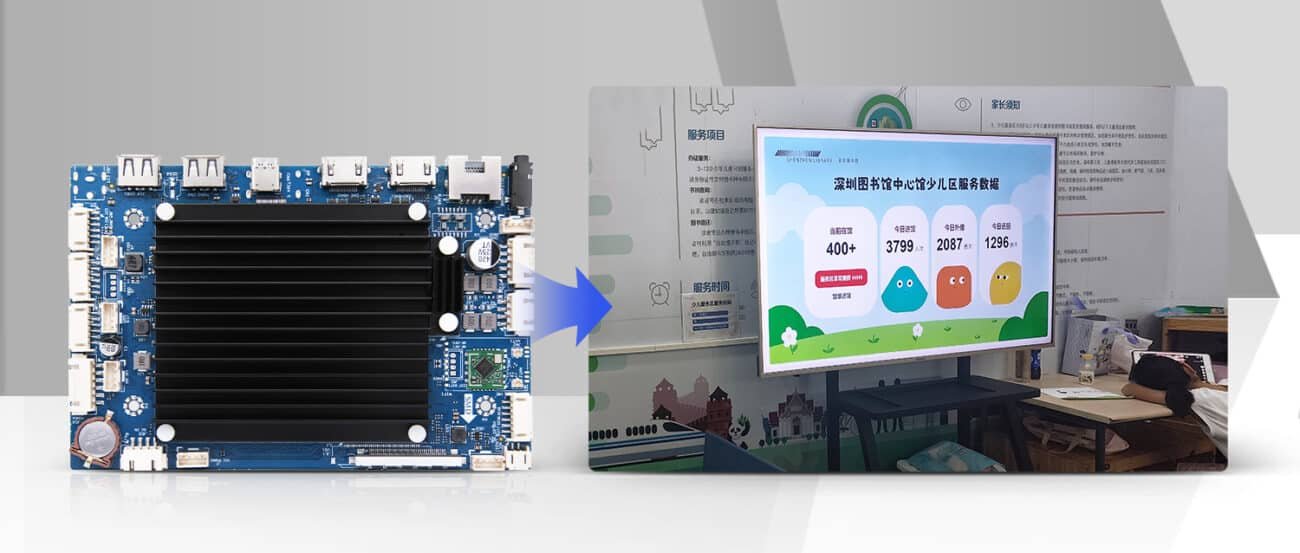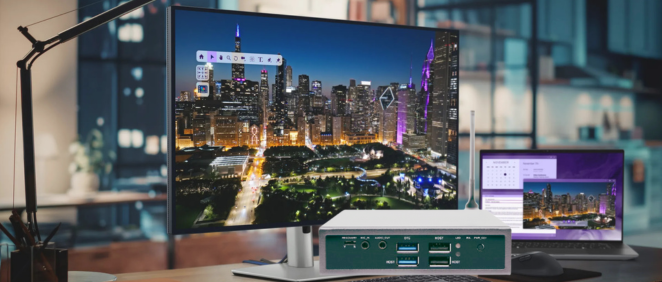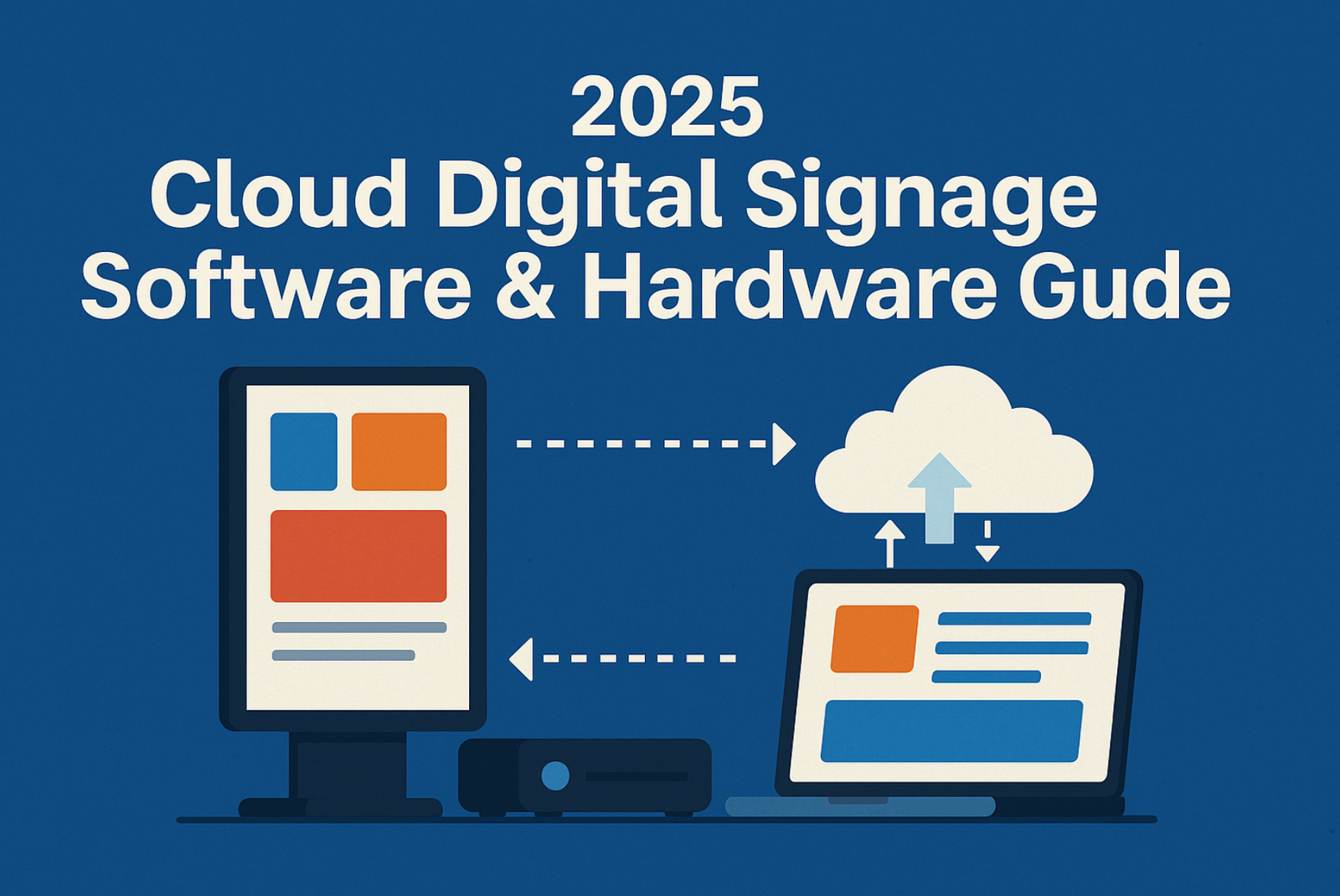
2025 Digital Signage Player Trends & Buying Guide
Introduction
In the context of digital transformation, digital signage players have become an important medium for information dissemination and user interaction in industries such as retail, transportation, education, and healthcare. With the rapid development of AIoT, edge computing, and cloud collaboration, the digital signage market is set to undergo a new round of upgrades by 2025. This article will analyze the technical trends, functional highlights, and application scenarios of digital signage players and provide a practical guide for enterprise selection.

Market Trends and Technological Developments
Higher-performance hardware platforms
The latest generation of digital signage players widely adopt high-performance SoC chips such as the RK3568, supporting 4K@60Hz video output and multi-screen display. These hardware upgrades provide stable support for complex scenarios, such as split-screen advertising playback in retail chain stores.
Recommended reading: AIBOX-3568A Digital Signage Player
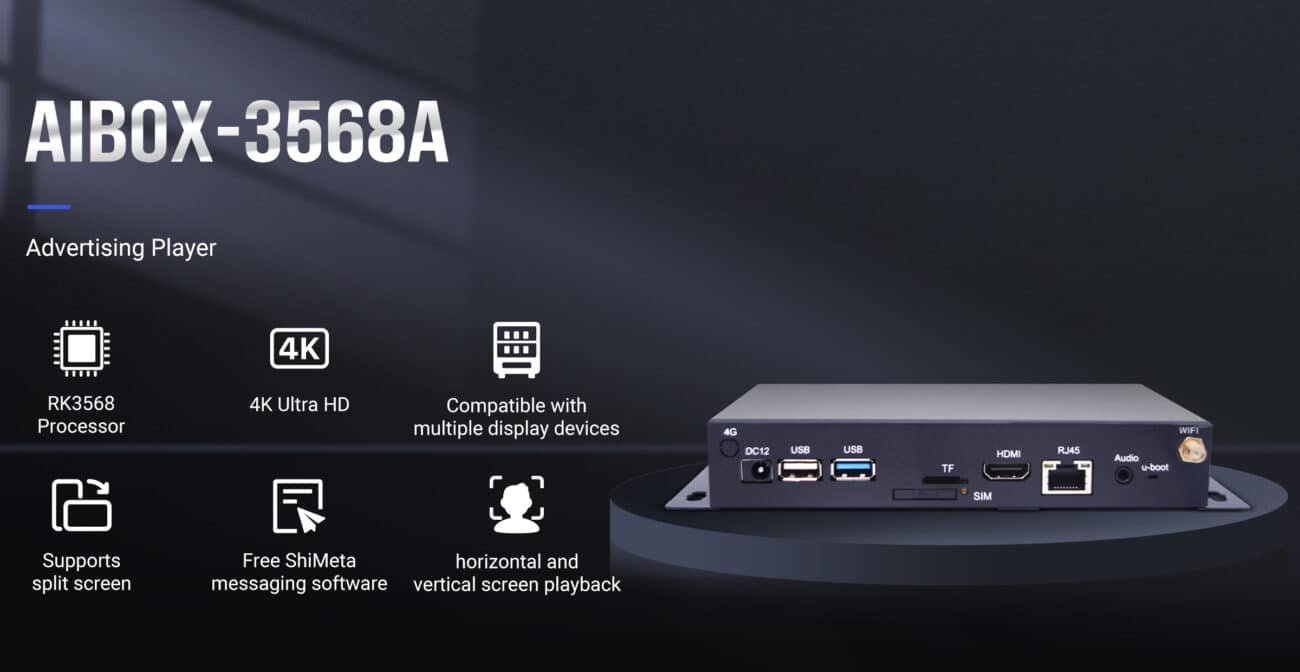
AI algorithm-driven personalized recommendations
Based on computer vision and big data analysis, digital signage can deliver personalized content, such as displaying different advertisements based on customer age and gender. This trend will significantly improve advertising conversion rates.
Cloud and Edge Collaboration
Future digital signage systems will not only rely on the cloud but will also emphasize the real-time response capabilities of edge computing nodes. For example, in transportation scenarios, edge devices can respond to dispatch information instantly without relying on network latency.
Further Reading: ShiMeta Information Publishing System Solution
Key features that companies focus on
High-definition multi-screen and split-screen management
By 2025, most digital signage players will support dual-screen display and multi-screen split-screen playback, making them ideal for scenarios such as shopping malls and subway stations where multiple content streams run concurrently.
Cloud-based centralized control
Enterprise users are increasingly prioritizing remote management and centralized control. Through the cloud platform, content can be uniformly pushed to hundreds of players, significantly reducing operational costs.
Security and Data Privacy Protection
With increasingly stringent regulations, players must comply with requirements such as GDPR and cybersecurity laws, and be equipped with features such as data encryption and permission classification to protect user privacy.
Industry Application Cases
Retail: Based on AI recommendation systems, digital screens in shopping malls can deliver targeted marketing based on customer profiles.
Transportation: Real-time flight and train schedules are dynamically updated on digital signage players at airports and subway stations.
Education and Campus: Smart electronic bulletin boards can uniformly publish campus notifications, enhancing campus informatization.
For more application scenarios, please refer to: ShiMeta Smart Monitoring and Information Publishing Solutions
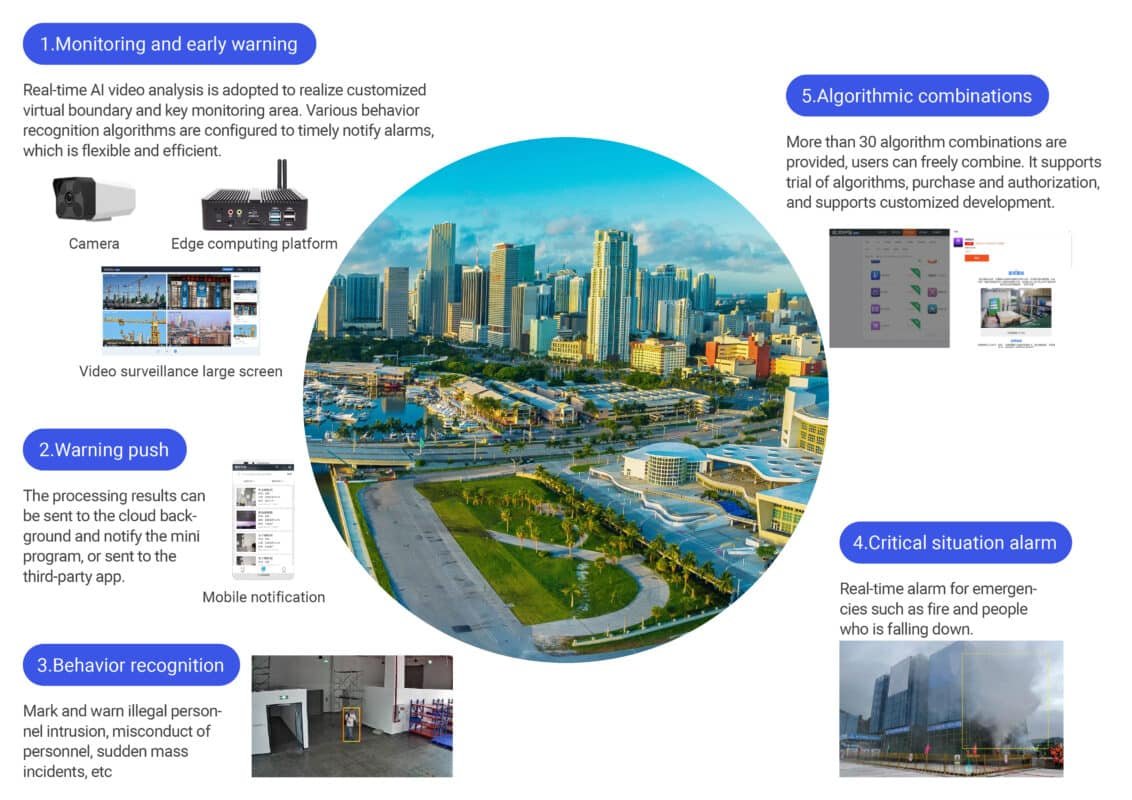
How to choose the right digital signage player
During the selection process, companies should focus on the following key points:
1. Hardware performance: Does it support 4K video, multi-screen output, and AI algorithm acceleration?
2. Software ecosystem: Is it compatible with Android/Linux and does it support multi-format media decoding?
3. Scalability: Does it support external sensors and cameras for smart interaction?
4. Service and support: Does the supplier provide long-term after-sales service, system upgrades, and cloud platform access?
Conclusion
By 2025, digital signage players will no longer be mere content playback tools but essential devices for businesses to achieve smart communication, precise marketing, and digital management. ShiMeta leverages AIoT technology and edge computing platforms to provide businesses with end-to-end solutions spanning hardware, software, and cloud platforms.
Looking to deploy an efficient and intelligent digital signage system?
Contact the ShiMeta today to get a customized AIoT solution.
FAQ
1. What is a digital signage player and how does it work?
A digital signage player is a specialized device that decodes and plays multimedia content—such as videos, images, or dynamic HTML—on digital displays. It acts as the core of a digital signage solution, receiving content from a CMS and rendering it on screens for public or commercial viewing.
2. What are the top 2025 digital signage player trends?
The 2025 digital signage player trends focus on AIoT integration, edge computing capabilities, ultra-compact embedded designs, and 4K/8K support. These trends reflect the growing demand for smart, scalable, and cloud-managed digital signage solutions across industries.
3. How to choose the right signage media player for your business?
Selecting a signage media player depends on several factors: display resolution (Full HD vs. 4K signage player), content type, environmental conditions, software compatibility, and scalability. Our digital signage buying guide outlines key decision-making criteria to help businesses find the ideal fit.
4. What are the differences between embedded signage players and external players?
An embedded signage player is built directly into the display or housed within the hardware enclosure, offering a cleaner and more reliable setup. In contrast, external media players provide greater flexibility and are easier to upgrade, especially in commercial display solutions that require modular maintenance.
5. Why are AIoT digital signage solutions becoming more popular in 2025?
The rise of AIoT digital signage solutions allows for smarter content triggering, audience analytics, and real-time system monitoring. These intelligent players enable dynamic content delivery based on sensors, cameras, or cloud data, marking a major shift in digital signage hardware selection.












